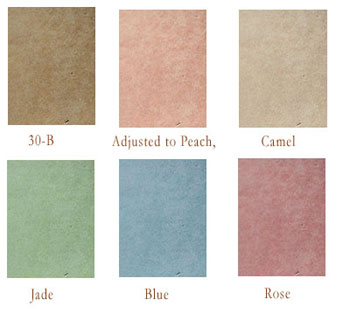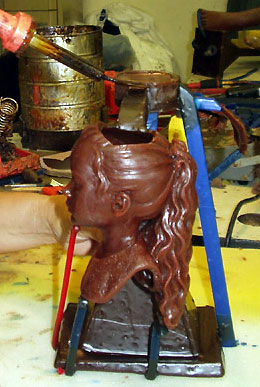 |
Here, the wax piece is being "gated" at Arizona
Bronze foundry where a sprue system of various pour cups,
down sprues, gates, fins and vents are installed. All of
these parts are made of wax and are designed to prepare for
the eventual pour of molten bronze. |
|
Next, the ceramic shell mold is made. Each wax assembly is
dipped into a clay-body slurry. It is then coated with a layer
of fine silica sand.
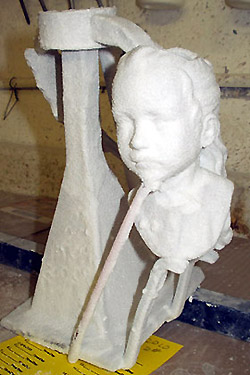
|
This process is repeated several times, beginning with a
fine sand layer and progressing to layers of coarser grit.
Large-scale sculptures may require up to twenty coats, with
drying between each coat. The process may take up to two weeks
for a large segment.
A week later, the ceramic shell mold is nearly finished.
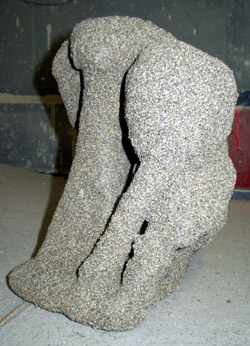
|
| Sorry folks - I missed a couple of photos here, but I'll come
back and insert them if possible.
Burnout: The wax piece coated with the ceramic
investment is placed into a large kiln that has been
preheated to 1650° F. In the process, the sand fuses into hard
ceramic and the wax is "lost" by being melted away
through dewaxing vents. |
Pour (shown below): In the most dramatic step of the entire process,
molten bronze heated to 2100° F is poured into the hot
mold
through the sprue system.
|
|
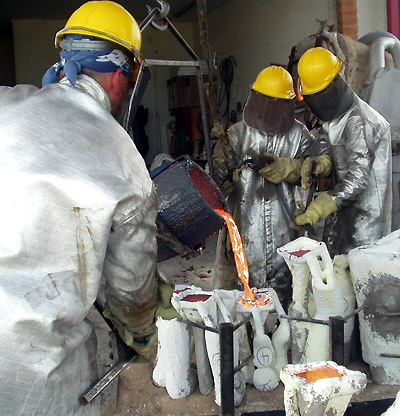
|
|
Divestment: After the bronze
has cooled, the ceramic shell is broken
off using pneumatic hammers and hand-held air
chisels.
Cut-off: The sprue system
is then cut away from the cast bronze
pieces using abrasive wheels and carbon-arc
torches. |
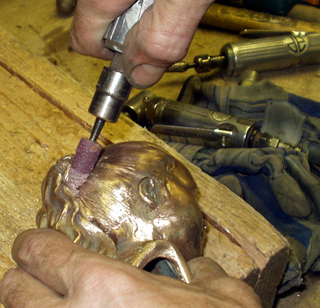 |
Metal chasing and assembly. Once the rough
casting is complete, the segments are welded together
to form the entire statue. The seam marks are erased
and the metal is chased to a final finish using a variety
of electric and pneumatic tools. |
|
Choosing a patina for the bronze is never easy - there are
just tooooo many choices as patination is an art form all on its
own. This customer prefers a fairly light
patina for this piece, so I offered this limited sampling to
choose from. I think we are leaning towards the peach to camel
range.
|
|
Although not exactly what I had in mind, here
is how the patina turned out.
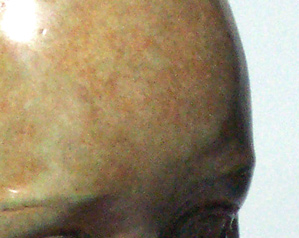
The final bronze below will be mounted on a
small pedestal-style hardwood base.
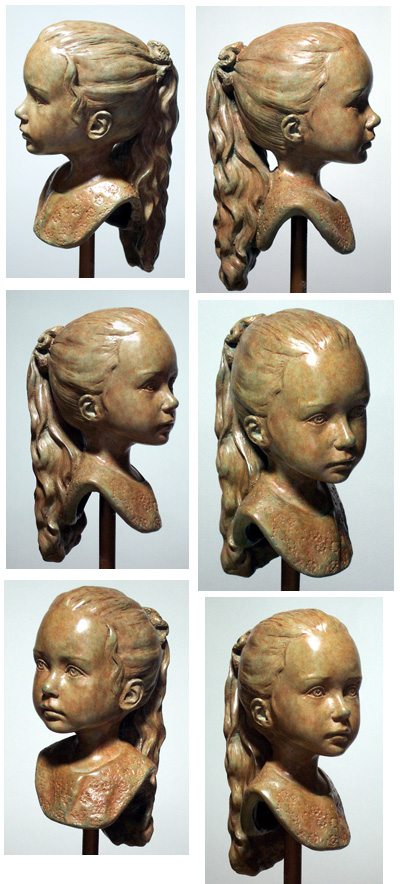
Thanks for viewing this demo! |
|







